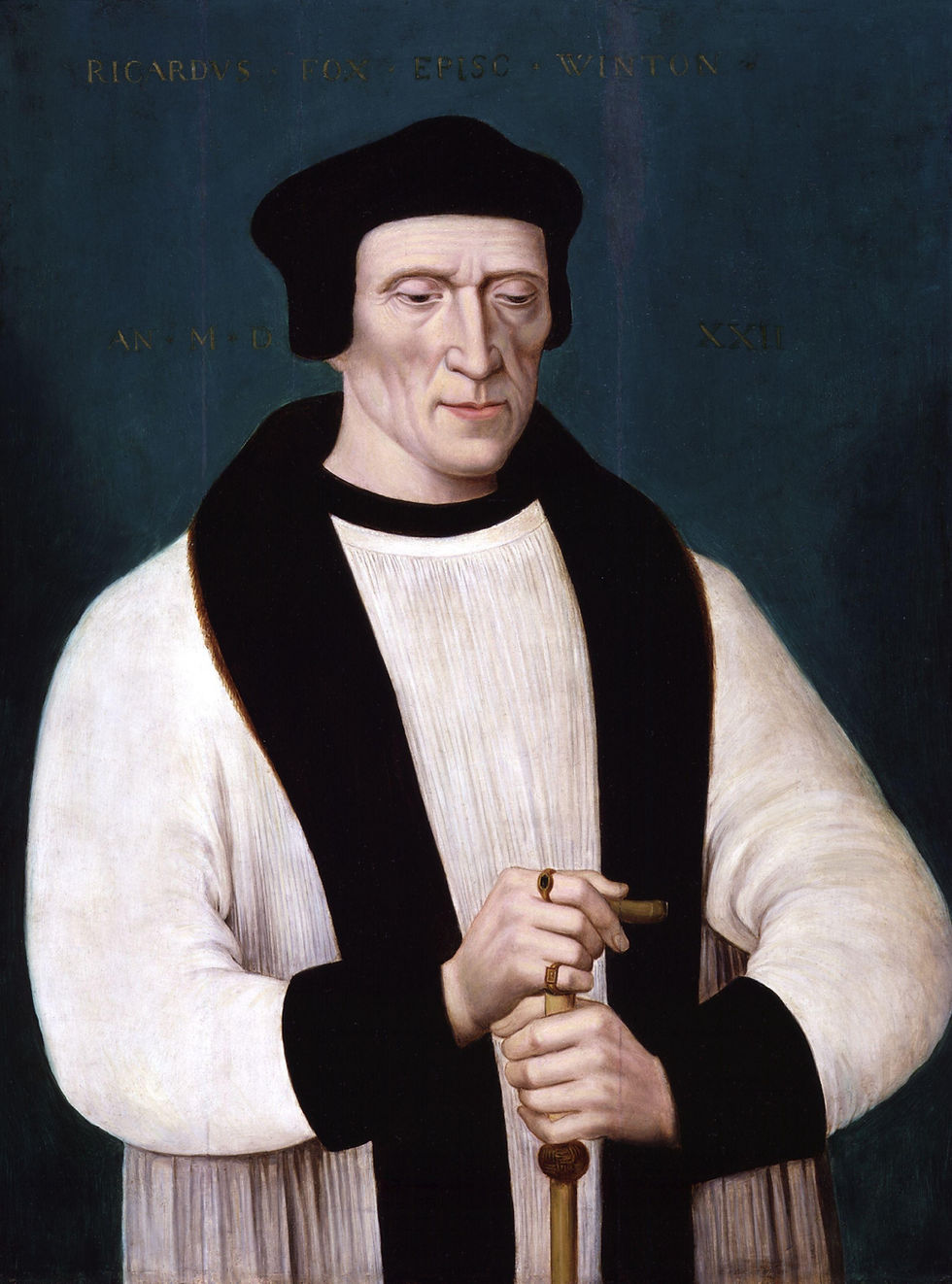Bishop, King, Queen
- gilldavid560
- Jul 24
- 3 min read
Updated: Sep 10

Stephen Gardiner - a roller coaster life Part 1
There was at that tyme in authoritye amongst the kinges counsellors one Steven Gardener, Byshop of Winchester, who as he was in those daies most cruell, so was he also of a mooste subtile and craftye witte … gropynge rounde aboute to get occasion to let and hinder the Gospell …
John Foxe, Book of Martyrs 1563
It is July 1554. The Bishop of Winchester, Stephen Gardiner, is officiating at the marriage of Queen Mary l, aged 38 to Philip, the 27 year old heir to the Spanish throne in Winchester Cathedral. So close was her relationship to Bishop Gardiner, that Queen Mary had stayed at his Palace in Farnham as she prepared for her forthcoming marriage. Who was 'Wily Gardiner? Why did Mary place so much trust in him?
Who was Stephen Gardiner?
His appointment to the bishopric of Winchester in 1531 by Henry VIII is an indication of the importance and stature of Stephen Gardiner, testament to his meteoric career already under his belt. Gardiner was a man of enormous intellect and energy - he moved in the highest of courtly circles; if you are familiar with Hilary Mantell's Wolf Hall trilogy or watched the BBC’s adaptations, you will have met Bishop Stephen Gardiner, who was played by Mark Gatiss and more recently by Alex Jennings. Mantel focuses on the rivalry between Thomas Cromwell and Stephen Gardiner, both enormously talented men but the stage wasn't big enough for them both so Gardiner and Cromwell tried to cancel each other out. As Gatiss said of his character 'Only one of them could win.' Cromwell was executed, on the orders of Henry VIII who had been influenced against him by none other than Stephen Gardiner who had always resented him, believing Cromwell to be nothing more than 'a low-born upstart'.
Gardiner's Early Career
After leaving Cambridge University, Gardiner became Cardinal Thomas Wolsey's secretary which brought him to the attention of King Henry VIII who appointed him as a foreign diplomat. Not surprisingly, this resulted in Gardiner's involvement in the King's wish to divorce Catherine of Aragon, which took him to France and Italy to try to secure an annulment but, even Gardiner's skilful arguments were not enough to succeed in the endeavour. His role in the King’s Great Matter is often overlooked, where his learning and letters reveal a complex and brilliant mind.
Six years later, in May 1533, Gardiner assisted the Archbishop of Canterbury, Thomas Cranmer, in finally pronouncing the marriage between Henry VIII and Catherine of Aragon null and void, and in 1535 he was one of the bishops asked to vindicate Henry VIII’s new title “Supreme Head of the Church of England”.
A religious tightrope
Throughout the rest of Henry's reign, Gardiner remained at the epicentre of court life, and also continued his diplomatic works on behalf of the King in Europe. He remained a staunch Catholic which proved to be an increasingly difficult balancing act in a country which had broken with the papacy. An example of this is in 1546, Gardiner, attempted to turn the King against his sixth wife, reformist Catherine Parr, as he, and others, were increasingly alarmed by her religious views. The plot failed when Catherine managed to reconcile with the King. But Gardiner's actions in working against the queen, had highlighted where his religious loyalty lay. His actions were to have repercussions when Henry VIII died and was succeeded by the young boy king Edward VI...
Imprisonment and Release
Following the death of Henry VIII in 1547, King Edward VI, imprisoned Gardiner first in The Fleet and then subsequently in the Tower of London, for his opposition to the religious changes Edward was making in favour of protestantism.
He was released at the accession of Mary I in 1553, and restored to his Winchester bishopric and made the Queen’s Lord Chancellor, the most senior political position in the land. Gardiner crowned her Queen of England at Westminster Abbey on the 1st October 1553. He helped Mary to restore Catholicism and, ironically, overturn the annulment of her parents’ marriage, making her legitimate once more.
The latter years
Stephen Gardiner died peacefully in his bed on the 12th November 1555. Despite his key roles under Mary I, there is little evidence he was involved in the executions which has given the title of Bloody Mary to the queen. No heretics were executed in the Winchester diocese. Gardiner tried to discourage Mary from burning heretics. Perhaps not with the vehemence he should have (he did after all approve the act reviving the heresy laws), but he is on record as counselling mercy.
Read Part 2 for more details of the relationship between Gardiner and Mary l




Comments